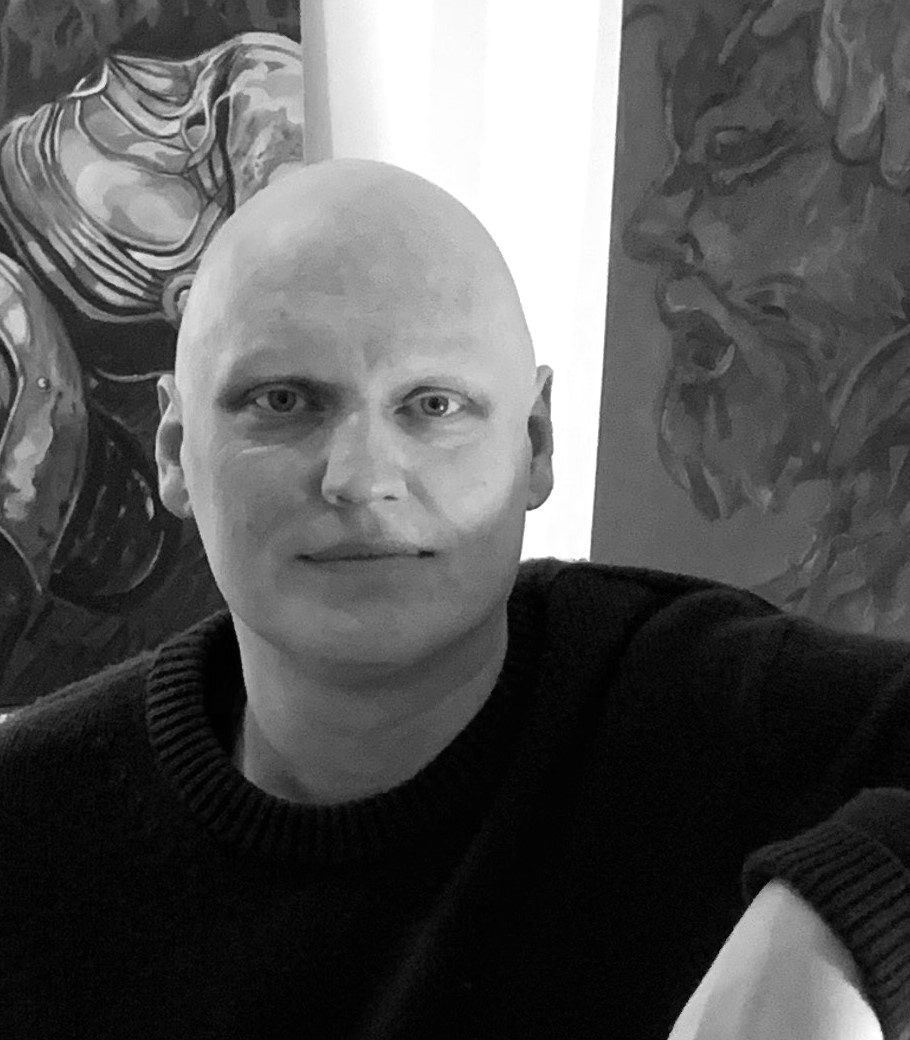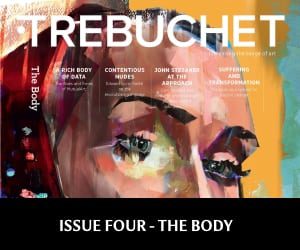[dropcap style=”font-size:100px; color:#992211;”]T[/dropcap]he ominous and ambiguous relevance of technology and science are put under scrutiny in the work of painter Adam Dix.
Dix is a visual artist working in a mode trail-blazed mainly by writers like H.G. Wells, Philip K. Dick and Kurt Vonnegut, where science fiction is used effectively to highlight prescient issues affecting our time. The visual language of communications technology, consumer trends and obsessions—more than a nod to Apple mania is evoked by religious and secular gatherings—are conflated with the iconography of 1950s and ’60s science fiction, giving the work a strangely nostalgic feel.
In a world where digital media, augmented reality and artificial intelligence are all on the cusp of a leap forward, it’s unlikely that he will run out of pressing subject matter.
Dix studied a BA (Hons) in Graphics and Illustration in 1990 at Middlesex Polytechnic and in 2009 an MA in Fine Art at Wimbledon College of Art. He lives and works in London and recently undertook a residency at the Griffin Gallery, where he reflected on process and painterly quality in his practice.
“My aim whilst a resident at Griffin was to further the already inherent layering process within the work and extend its economic language by creating works that had an optical depth and visual ‘pull and push’ between figurative and abstract forms within the painting, through shallow layering of paint.” Adam Dix, 2017
Dix’ practice is deceptively benign on first glance; the subtle paint washes, nostalgic imagery and muted, well-handled colour make seductive viewing. But there is a lingering sense of being caught among forces too great to control. Vaguely utopian, hypnotic memories of the future.
How do you define the body?
“The figure within my work is used as a visual and narrative contrast to the objects of technology depicted: the organic and the synthesised. It is as if the people have an over familiar sense of commitment to these sterile forms, a necessary relationship of connection.
Costume and characters are important to my work, emphasising the ritualistic and ceremonial qualities. There is an ambiguous hierarchy and sense of history, a play of past and present, with ‘dress’ pointing to a time when technology was seen in futuristic terms rather than personal commodity. I see the figures as organic nodes relaying information via the machine, self-perpetuating and succumbing to their innate need to connect.
The shamanic character role within the narrative is a key character found in traditional forms of folkloric custom and spiritualism that would be there to mediate between the audience and the spirit world. Here in my work I have made the shaman a composite of receptor and conduit. Adorned with a crown of satellite-dish-type spheres, he is engaged with other characters. Sometimes with evangelical presence he lays hands upon the subjects to complete the circuit of communication.
The shaman in my work represents an individual that aligns himself with the devices of connectivity. Deciphering and acting as a conduit, his true identity is a masked screen; he is a custodian of communication who is there to symbolise the link between the individual and an all-encapsulating system of communication.”
Read this article in full in Trebuchet 4 – The Body

Michael Eden is a visual artist, researcher and writer at the University of Arts London exploring relationships between monstrosity, subjectivity and landscape representation.






















